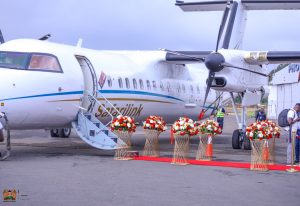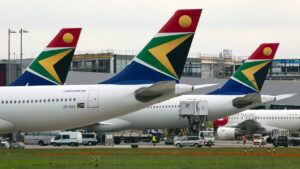The continued focus on tourism in the Middle East has helped the region navigate its way through the unchartered landscape of Covid. Qatar is leading the way on recovery.
With flyers feeling more confident about long-haul travel, Americans are kick-starting travel revival in the world and the Middle East is no exception, noted market intelligence firm ForwardKeys.
A trend that had been highlighted in Skift’s U.S. Travel Tracker March 2022 report.
Even as UK continues to be the top source market for the Middle East contributing to almost 13 percent of arrivals, U.S. is now inching closer to lead this recovery with shares at a little above 11 percent.
U.S. arrivals register a 15 percent increase over pre-pandemic levels, according to data from ForwardKeys.
Based on the tickets issued for international arrivals to the Middle East in the second quarter of this year, Qatar is leading tourism recovery in the Middle East. The country is the only destination in the region to register a 7 percent increase over pre-pandemic levels.
Specifically for Qatar, arrivals from the U.S. have gone up by 105 percent while UK arrivals registered a 76 percent increase, compared to 2019.
Egypt, which ranked second in the recovery charts, registered a 27 percent decrease in on-the-book international arrivals compared to 2019, while United Arab Emirates (UAE), a close third, marked a 29 percent decrease.
However, both Egypt and UAE have performed better against the Middle East and Africa’s total average, which is down by 33 percent compared to 2019, noted ForwardKeys.
This year’s average for the region is a marked improvement against last year, which was down 64 percent.
The Middle East is above the global travel recovery average, which is 45 percent below 2019.
Aviation Looks Up
The listing of airports in the Middle East throws another surprise as Dubai Airport trails behind Abu Dhabi to occupy fourth position.
Hurghada, the second busiest airport in Egypt after Cairo and a prominent leisure destination, was ranked as the most resilient airport showing a 17 percent increase in pre-pandemic levels.
Registering a 7 percent increase over 2019 arrivals, Doha airport maintained second position. This increase was aided by Doha maintaining most air services during the pandemic and Qatar Airways adding more routes from their Doha hub, said Shingai George, Africa market expert at ForwardKeys.
However, George warned that all of this could change in the blink of an eye if travel restrictions are eased as last-minute bookings continue to remain the norm.
As comfort trumps cost, travellers today do not mind spending more to travel comfortably, spurring the demand for premium cabin classes, which Skift had identified as a megatrend for 2022.
As a result, premium cabin shares onboard flights in the region have increased by 4.3 percent since 2019. And while passengers travelling by premium cabin class are down by just 14 percent compared to pre-pandemic levels, economy class tickets are 37 percent below 2019 levels.
Source: Skift






